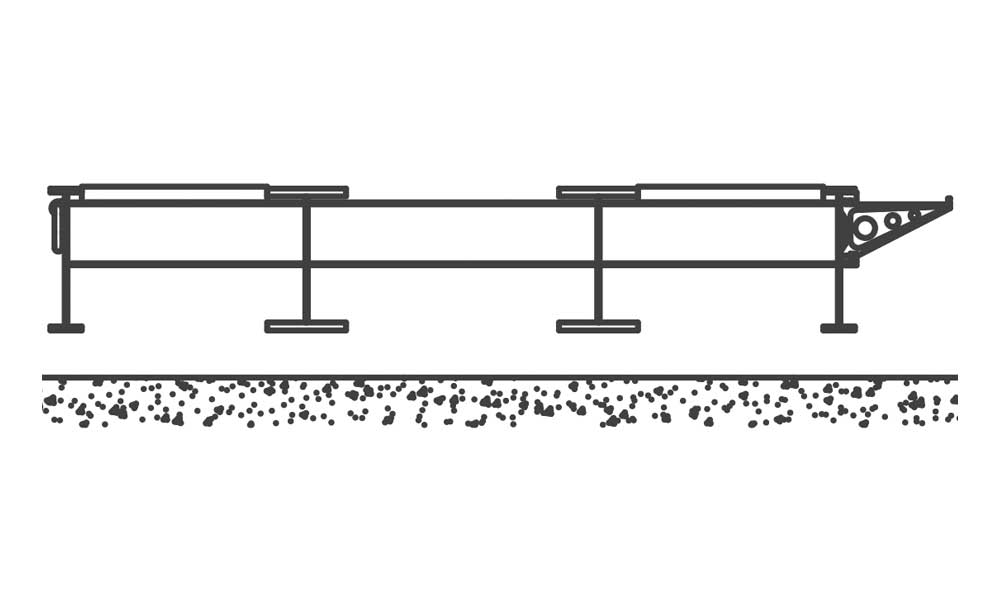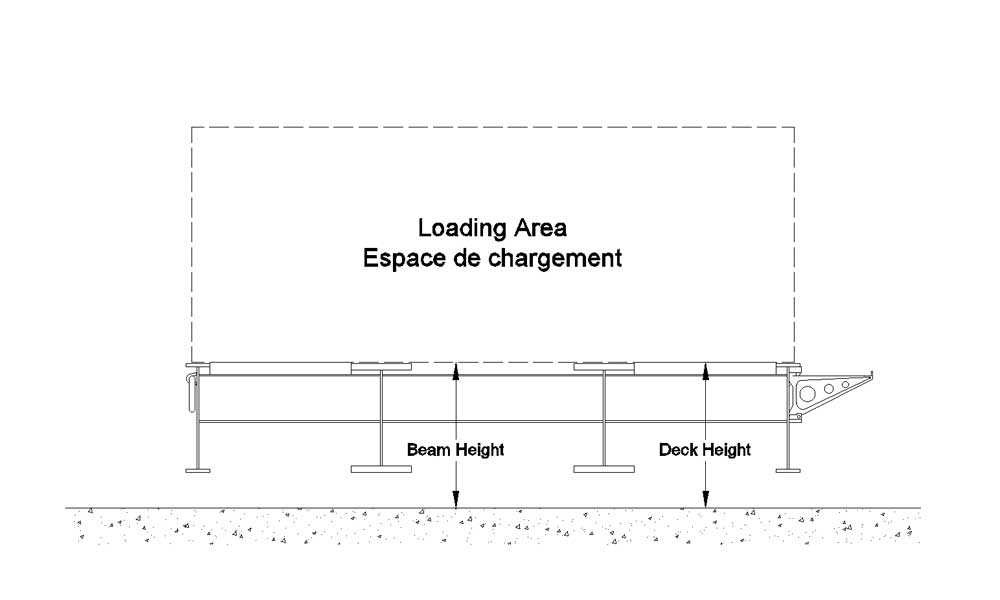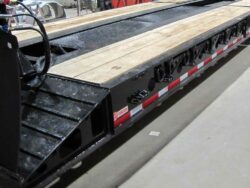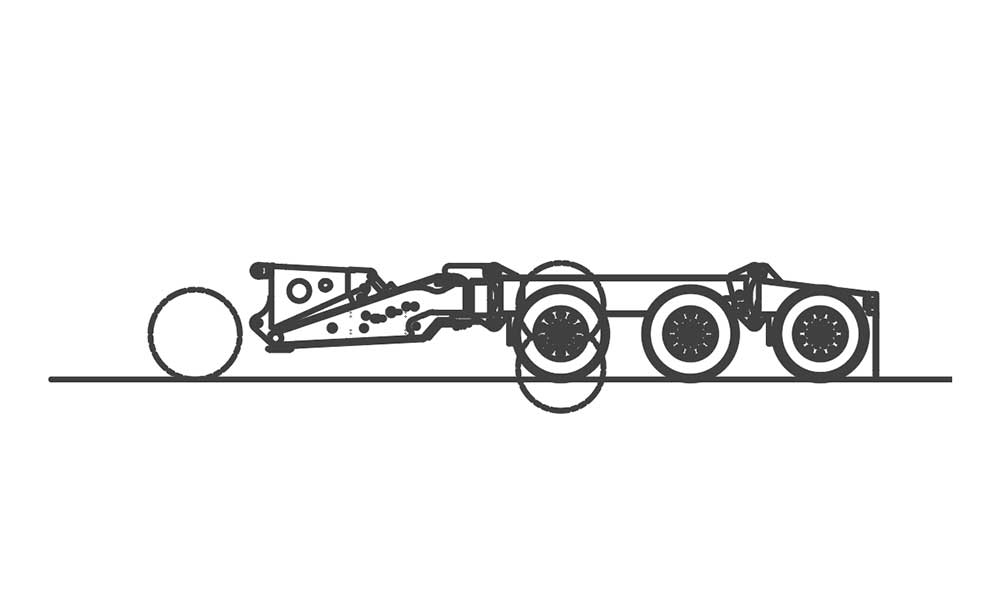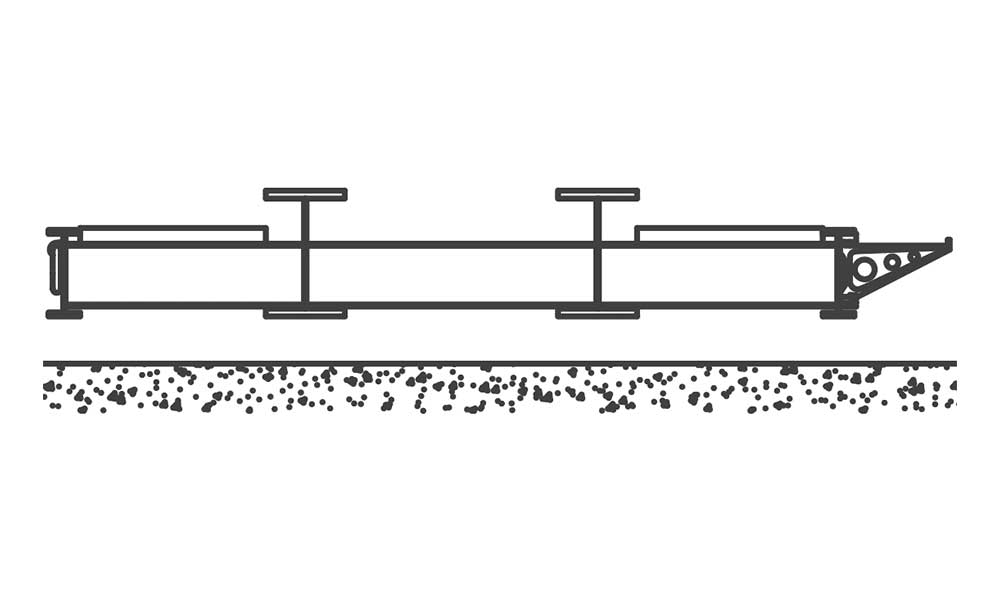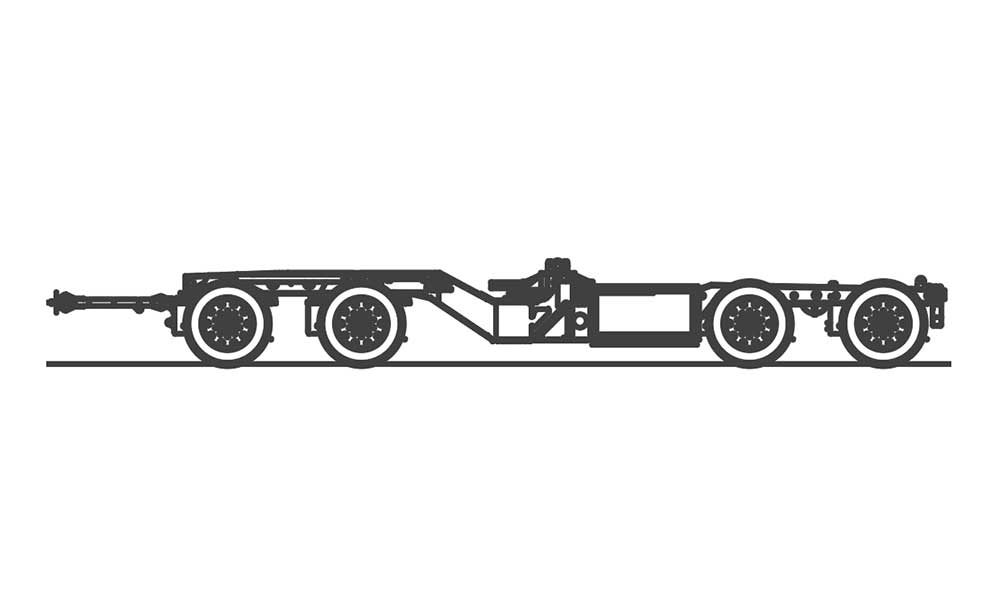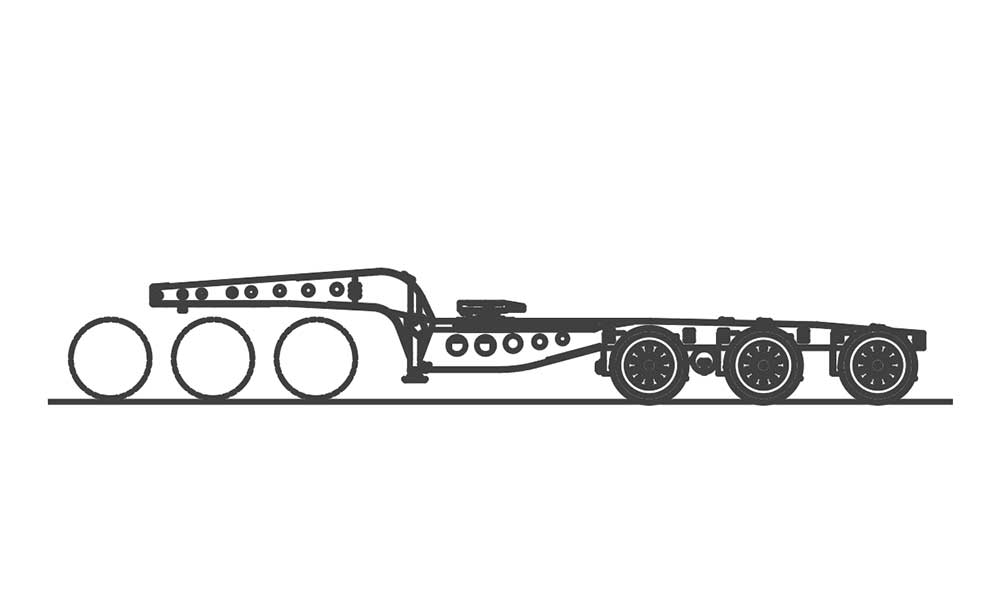This beam configuration has the best performance in terms of weight/load capacity. The most notable disadvantage is the high loading height. The front ramps used to load a mobile machine onto its deck will be steep or will need fold down ramps.
Components
Quick Specs
Length
N/A
Width
N/A
Height
N/A
Weight
N/A
High Flat Deck
Beam Characteristics
(1 = worst, 10 = best)
1
| Beam Stiffness | 10 |
2
| Weight | 10 |
3
| Loading Height | 1 |
4
| Can Receive Extensions | Yes |
5
| Extendible on Length | No |
6
| Extendible on Width | No |
Capacity
Minimum Payload
32,000 kg
Maximum Payload
118,000 kg
Minimum Carrying Height
22 in
Maximum Carrying Height
26 in
Ask us about the High Flat Deck
Send us a message to learn more about this Temisko product.

